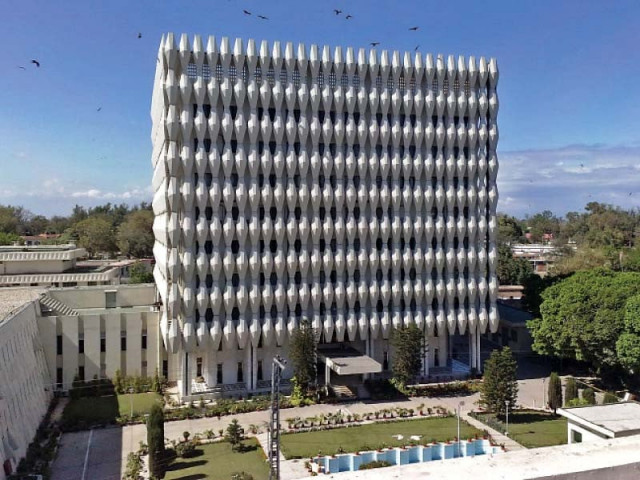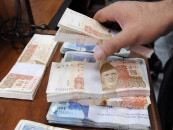7% policy rate cut projected for CY24
With this, industries relying on bank borrowing will get affordable credit

Pakistan’s central bank is expected to cut its benchmark policy rate – cost of lending to commercial banks – by seven percentage points during the next calendar year to 15%, which will revive the lifeline of affordable financing for industries that heavily rely on bank borrowing.
Such industries mainly include textile, cement, steel and agriculture. Besides, commercial banks are projected to achieve a 12% growth in net profits in 2024 against the general assumption of a reduction in earnings in the wake of rate cut and imposition of 40% tax on their windfall income from alleged speculative rupee-dollar exchange business.
In a report titled “Commercial Banks Overcoming Headwinds – Resilient Near-Term Profitability Expected”, Arif Habib Limited economist Sana Tawfik projected a significant policy rate cut by the central bank. Talking to The Express Tribune, she said energy sectors including oil and gas exploration firms and power companies would also benefit from the policy rate cut one way or the other.
The research house projected economic growth of 3.3% in the current fiscal year compared to the government and central bank’s forecast in the range of 2-3%, arguing the higher growth would come from the monetary policy easing, which would benefit industrial, agriculture and services sectors.
She said the central bank may make a token reduction of 50-100 basis points in the policy rate in its monetary policy announcement in January 2024. The rate cut drive will definitely begin along with massive easing of inflation from March 2024 onwards. Inflation, however, would remain elevated in November around 28% on the back of a massive hike in gas prices with effect from November 2023, Tawfik said.
The government will be the biggest beneficiary of the rate cut, which will reduce its interest payments on the piling debt. The lower interest cost will create some fiscal space for the government to make necessary development expenditures and prop up economic activities.
Read: SBP keeps key policy rate unchanged at 22pc
Besides, the current account deficit is expected to remain under control around $4 billion. This, coupled with rupee stability – owing to a notable recovery in the currency in the initial months of FY24 and no major depreciation like that happened in previous years – will also support the economy to flourish. The general elections scheduled for February 2024 and expected signing of a bigger IMF loan programme will help attract foreign currency inflows from global creditors and international investors. The rate cut and other supportive actions would increase Pakistan’s economic growth to 4.3% in the next fiscal year, ie, 2024-25, Tawfik said.
With those developments, the Pakistan Stock Exchange (PSX) would grow by leaps and bounds as major financial institutions including mutual funds and insurance companies had started relocating investments to the stock market from fixed-income instruments, she said.
Banks’ profitability
In the report, Tawfik said “we expect near-term profitability for the banking sector to remain robust in the first half (Jan-Jun) of calendar year 2024 despite potential headwinds from a reversal in policy rate cycle (cumulative 7% reduction in policy rate in CY24).”
The lagged effect of asset re-pricing versus funding costs, potential balance sheet expansion and opportunities for capital gains on the fixed Pakistan Investment Bonds (PIBs) portfolio are likely mitigation factors against the potential NIM reduction from rate cuts.
The 40% tax on the windfall income of banks earned from rupee-dollar exchange business in 2021 and 2022 will impact the net profit only one time in the fourth quarter (Oct-Dec) of CY23.
“Earnings shall remain solid over the next few quarters with 12% growth in CY24 despite a potential hike in credit costs as result of implementation of IFRS-9 (effective from January 2024),” she said.
Published in The Express Tribune, November 26th, 2023.
Like Business on Facebook, follow @TribuneBiz on Twitter to stay informed and join in the conversation.


















COMMENTS
Comments are moderated and generally will be posted if they are on-topic and not abusive.
For more information, please see our Comments FAQ